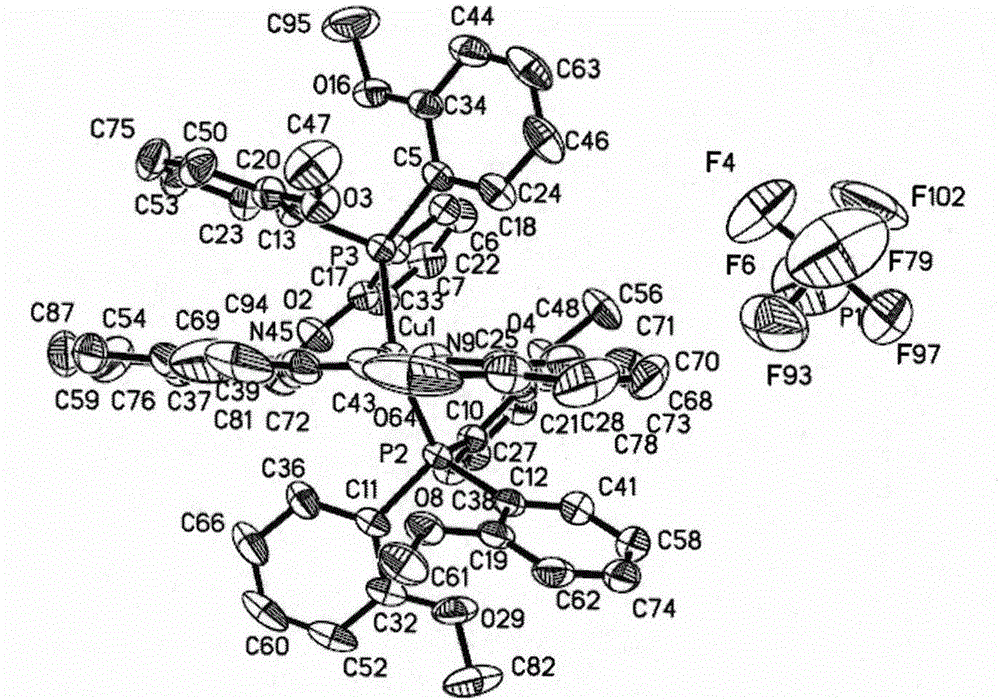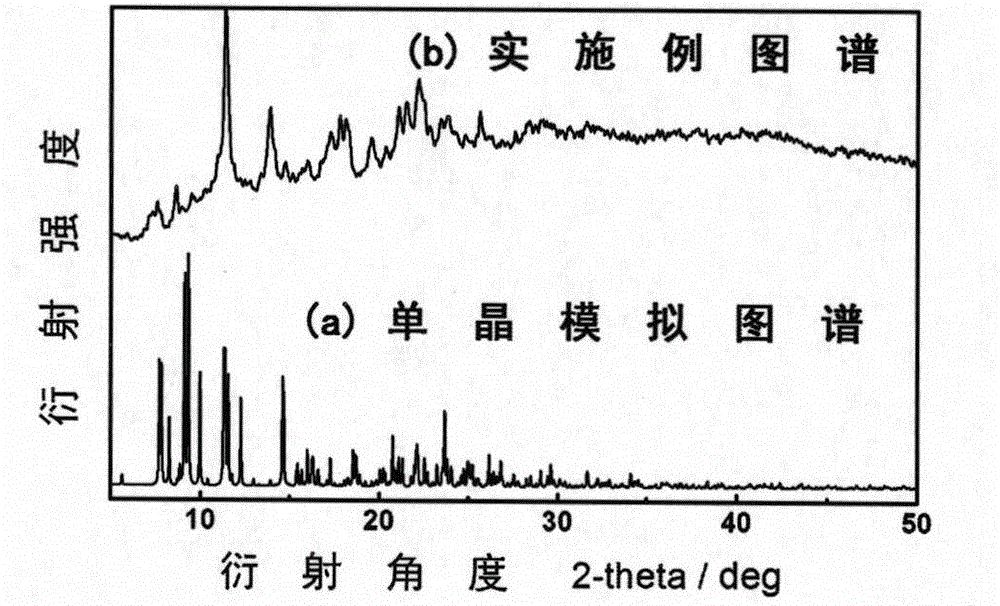Cuprous complex orange red phosphorescent material based on benzoxazolyl quinoline
A benzoxazolyl quinoline, phosphorescent material technology, applied in the field of luminescent materials and organic electroluminescent materials, can solve the problems affecting the popularization, application and market performance of OLEDs, the luminous intensity cannot meet the application requirements, and the cost is high. The effect of good phosphorescence emission performance, good solubility and thermal stability, and low production cost
- Summary
- Abstract
- Description
- Claims
- Application Information
AI Technical Summary
Problems solved by technology
Method used
Image
Examples
Embodiment 1
[0033] A large number of orange-red phosphorescent Cu(I) complexes [Cu(2-QBO)(o-anisyl 3 P) 2 ]PF 6 Microcrystalline sample preparation: weigh 0.1 mmol of [Cu(CH 3 EN) 4 ]PF 6 Dissolve in 5mL CH 2 Cl 2 , then weigh 0.1mmol of 2-QBO and 0.1mmol of o-anisyl 3 P(tris(o-methoxyphenyl)phosphine), each dissolved in 5 mL CH 2 Cl 2 In , all three solutions were mixed (the molar ratio of the three reactants was 1:1:1), and stirred to make the coordination reaction fully occur, and finally the obtained orange-yellow solution was filtered, and all solvents were removed by rotary evaporation , and dried at 100 degrees to obtain an orange crystalline powder as the product with a yield of 98% (calculated as Cu).
Embodiment 2
[0035] Synthesis of orange-red phosphorescent Cu(I) complex [Cu(2-QBO)(o-anisyl 3 P) 2 ]PF 6 Single crystal: weigh 0.1mmol of [Cu(CH 3 EN) 4 ]PF 6 Dissolve in 5mL CH 2 Cl 2 , then weigh 0.1mmol of 2-QBO and 0.1mmol of o-anisyl 3 P(tris(o-methoxyphenyl)phosphine), each dissolved in 5 mL CH 2 Cl 2 In the process, all three solutions were mixed and stirred to make the coordination reaction fully occur. Finally, the obtained orange-yellow solution was filtered, and the filtrate was covered with n-hexane to promote the crystallization of the product. After standing for several days, a large number of orange blocky crystals were precipitated. An orange crystal with a size of 0.38mm×0.32mm×0.26mm was selected for X-ray single crystal structure test. The molecular structure of the compound is shown in the attached figure 1 , and its unit cell packing structure is shown in the attached figure 2 .
[0036] For orange-red phosphorescent Cu(I) complex [Cu(2-QBO)(o-anisyl 3 P...
PUM
 Login to View More
Login to View More Abstract
Description
Claims
Application Information
 Login to View More
Login to View More - R&D
- Intellectual Property
- Life Sciences
- Materials
- Tech Scout
- Unparalleled Data Quality
- Higher Quality Content
- 60% Fewer Hallucinations
Browse by: Latest US Patents, China's latest patents, Technical Efficacy Thesaurus, Application Domain, Technology Topic, Popular Technical Reports.
© 2025 PatSnap. All rights reserved.Legal|Privacy policy|Modern Slavery Act Transparency Statement|Sitemap|About US| Contact US: help@patsnap.com



